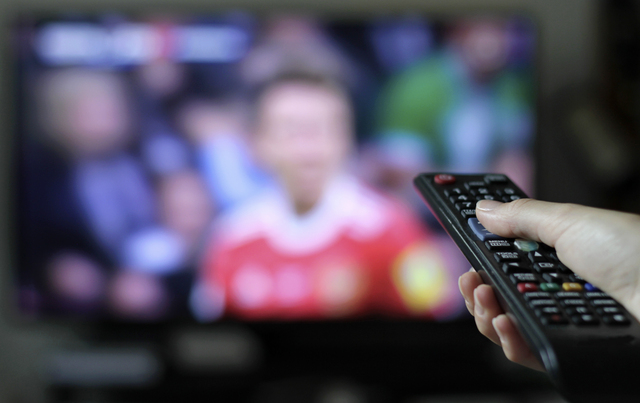Introduction to IPTV Lag
Overview of IPTV lag and freezing issues
IPTV Lag or freezing can be frustrating for users and often occurs due to various factors. One of the significant factors that service providers consider is the internet speed. When the internet speed is slow, it affects the loading time of channels, leading to buffering issues. In such cases, the administration team may conduct tests on servers and even move channels to improve performance.
Importance of fixing IPTV lag for smooth streaming
Ensuring smooth streaming for IPTV services is crucial for customer satisfaction. When users experience lag or freezing, it hampers their viewing experience and may lead to dissatisfaction with the service. By addressing buffering issues promptly and effectively, service providers can enhance the overall user experience, retain customers, and maintain a positive reputation in the market.
Understanding IPTV Lag and Buffering
Causes of IPTV lag and buffering
– Inadequate Internet Speed: Insufficient internet speeds can result in buffering and freezing while streaming IPTV content.
– Wi-Fi Interference: Significant interference with the Wi-Fi signal can lead to buffering issues during IPTV streaming.
– Network Congestion: If the IPTV provider’s network is congested, it can cause freezing and lagging in the video playback.
Effects of lag and freezing on streaming experience
– Disrupted Viewing Experience: IPTV lag and buffering can disrupt the smooth streaming experience, causing frustration for users.
– Delayed Video Playback: Lagging and freezing can delay the video playback, affecting the real-time streaming of content.
– Decreased Enjoyment: Continuous buffering and freezing can reduce the overall enjoyment of watching IPTV content.
Method 1: Set up or Restart Your Wi-Fi
Identifying Wi-Fi interference issues
– Check Signal Frequency: Move your device to the 5GHz signal if it’s currently connected to the 2.4GHz signal to reduce interference.
– Router Placement: Ensure that the router is placed in a central location away from obstructions to improve Wi-Fi signal strength.
– Interference Sources: Identify and eliminate potential sources of interference such as other electronic devices or appliances.
Restarting Wi-Fi for improved streaming
– Reboot Router: Power cycle your router by unplugging it, waiting for a few seconds, and plugging it back in to refresh the connection.
– Reset Network Settings: Resetting network settings on your device can help clear any temporary issues causing Wi-Fi interference.
Popular posts
- Ibo Player FAQs: Everything You Need to Know | StaticIPTV.uk
- The Best IPTV Telegram Channels for Live Sports Streaming
- The Ultimate Guide to Troubleshooting IPTV Static | StaticIPTV.uk
- Duplex Play Activation Made Easy: Follow These Simple Steps
- Static IPTV: Stable IPTV Streams – No Buffer | StaticIPTV
- IBO Player Activation – Unlock Features | StaticIPTV
- How to Access UK IPTV Channels from Anywhere | StaticIPTV.uk
– Update Firmware: Ensure that your router’s firmware is up to date to optimize performance and reduce lag while streaming IPTV content.
Method 2: Restart the TV/Firestick/Box
Power Cycling Devices
– Restart Device: Turn off your TV, Firestick, or streaming box, wait for a few minutes, and then power it back on to resolve any software glitches causing buffering.
– Check for Updates: Ensure that your streaming device’s software is updated to the latest version to improve compatibility and performance.
– Clear Cache: Clearing cached data on your device can free up memory and improve the streaming experience by reducing buffering issues.
Method 3: Check the Internet Speed
Performing Speed Tests
– Use Speed Test Tools: Check your internet speed using online speed test tools to determine if your connection meets the recommended speed for IPTV streaming.
– Upgrade Plan: Consider upgrading your internet plan if the speed test results show that your current plan is insufficient for smooth streaming.
– Ethernet Connection: Use an Ethernet cable for a direct connection to the router for a more stable and reliable internet connection.
Method 4: Connect the Device to the Router
Improving Connection Stability
– Wired Connection: Connect your device directly to the router using an Ethernet cable to eliminate Wi-Fi interference and ensure a stable connection.
– Quality Ethernet Cable: Use a high-quality Ethernet cable to avoid signal degradation and maintain consistent internet speeds.
– Router Placement: Position the router closer to the device for a stronger and more reliable connection, especially for devices with weaker Wi-Fi signals.
Method 2: Optimize IPTV Settings
Adjusting IPTV settings for better performance
– Customize Video Quality: Access the menu or Settings feature in your IPTV service/device to adjust video clarity resolution. Opt for Standard Definition (SD) for smoother streaming.
– Check Streaming Speed: Look for settings related to streaming speed and make sure it is suitable for your internet connection to prevent buffering.
– Select Server Locations: Some IPTV providers allow users to choose server locations for better connectivity and minimal lag.
– Enable Hardware Acceleration: Utilize hardware acceleration if available to enhance streaming performance on compatible devices.
Ensuring optimal streaming quality
– Stable Internet Connection: Confirm that your internet connection is stable and has enough bandwidth to support IPTV streaming without interruptions.
– Restart Router: Restart your router periodically to refresh the connection and resolve any network congestion issues that could lead to buffering.
– Update IPTV App/Device: Ensure that your IPTV application or device is up to date with the latest software version to optimize performance.
– Limit Connected Devices: Reduce the number of devices connected to your network while streaming IPTV to prioritize bandwidth for smoother playback.
By optimizing your IPTV settings and ensuring a stable internet connection, you can minimize lag, buffering, and freezing issues to enjoy uninterrupted streaming of your favorite content.
Method 3: Choose a Premium IPTV Service
Benefits of using premium IPTV services
– High Reliability: Premium IPTV services offer stable and reliable streams without lag or buffering issues, providing a seamless viewing experience.
– Diverse Channel Selection: Premium services often provide access to a wide range of channels from around the world, including premium content, offering a comprehensive viewing experience.
– Enhanced Viewing Quality: Premium IPTV services prioritize video quality, offering crisp and clear images with high-resolution streams for an immersive entertainment experience.
– Dedicated Customer Support: Premium providers usually offer dedicated customer support services to assist users with any technical issues or queries promptly, ensuring a smooth experience.

Method 4: Update Device Firmware
Importance of firmware updates for lag-free streaming
– Enhanced Performance: Regular firmware updates often contain optimizations that improve device performance, ensuring smoother IPTV streaming experiences.
– Security Features: Updates may also include security patches that help protect your device from vulnerabilities, ensuring a safe streaming environment.
– Bug Fixes: Manufacturers release updates to address bugs and glitches that could cause lag, buffering, or freezing issues during IPTV playback.
Steps to update device firmware for IPTV
Updating your device’s firmware is essential for optimal IPTV performance. Follow these steps to ensure your device is running on the latest software version:
1. Check for Updates: Access your device’s settings menu and look for the software update section. Check if there are any available updates for your device.
2. Download and Install: If an update is available, download and install it following the on-screen instructions. Ensure that the process is completed successfully.
3. Restart Device: After updating the firmware, restart your device to apply the changes and optimize its performance for seamless IPTV streaming.
4. Monitor Performance: Keep an eye on your device’s performance after the firmware update to verify if lag, buffering, or freezing issues have been resolved.
By regularly updating your device’s firmware, you can ensure a smoother and uninterrupted IPTV streaming experience with improved performance and stability.
Method 5: Clear Cache and Cookies
Clearing cache and cookies for smoother IPTV playback
– Improved Performance: Clearing the cache and cookies in your IPTV app or browser can help enhance performance by removing temporary data that may be causing buffering or lagging issues.
– Resolving Glitches: Removing stored data can address glitches that impact the streaming quality, ensuring a smoother viewing experience for IPTV users.
– Optimizing Streaming: By clearing cache and cookies regularly, users can optimize their viewing experience and prevent interruptions during IPTV playback.
Recent Posts
- IPTV Free Trial: No Credit Card, No Risk | StaticTV.org
- IPTV Trial in 2025 – How to Start Watching Free | StaticTV.org
- IPTV Main Features: What Makes a Great Provider | StaticTV.org
- IPTV Firestick: Best Apps & Setup Guide | StaticTV.org
- Smart One IPTV – Is It Worth It in 2025? | StaticTV.org
- SS IPTV Explained: Setup, Features & More | StaticTV.org
- IG IPTV: Features, Pricing & Better Options | StaticTV.org
Method 6: Contact IPTV Provider Support
Seeking assistance from IPTV provider for technical issues
– Expert Guidance: Contacting your IPTV provider’s support team can provide you with expert assistance in resolving technical issues related to your IPTV service.
– Service Specific Solutions: They can offer solutions tailored to their service, ensuring effective troubleshooting for problems like buffering, freezing, or channel unavailability.
– Account Verification: Provider support can help verify your account details to ensure seamless access to IPTV channels and content.
Troubleshooting guide for resolving IPTV problems
If you encounter issues with your IPTV service, consider these troubleshooting steps before contacting your provider’s support:
1. Check Internet Connection: Ensure your internet connection is stable and meets the required speed for IPTV streaming.
2. Restart Device: Simple restarts can often resolve minor glitches causing streaming problems.
3. Clear Cache: Clearing the cache on your IPTV device or app can help improve performance and resolve playback issues.
4. Update Applications: Make sure your IPTV apps are up to date to avoid compatibility issues.
5. Check Subscription Status: Verify that your subscription is active and up to date to avoid service disruptions.
6. Review Settings: Check your device settings to ensure they are optimized for IPTV streaming.
If the issues persist after attempting these steps, reaching out to your IPTV provider’s support team for further assistance is recommended. Their expertise and service-specific knowledge can help you resolve any technical difficulties you may encounter during IPTV streaming.
Conclusion
Recap of effective methods to fix IPTV lag
– Utilize different methods to troubleshoot buffering and freezing issues in IPTV streaming.
– Contact IPTV provider support for tailored solutions to technical problems.
– Ensure internet connection stability and device optimizations.
Tips for maintaining a smooth streaming experience
– Regularly update IPTV applications to avoid compatibility issues.
– Verify subscription status to prevent service disruptions.

